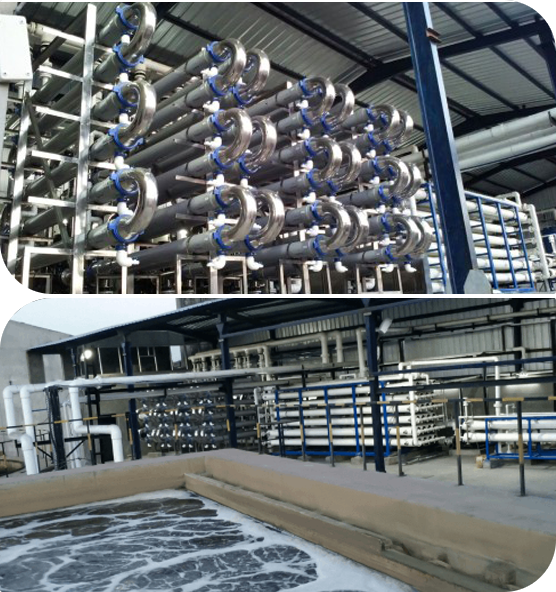
Waterman Engineers Australia is without doubt one of the top makers of Zero Liquid Discharge process. A ZLD process is usually a treatment process that is utilized to remove all of the liquid squander from the program. The aim of ZLD water treatment is to lower wastewater economically and develop potable drinking water which is suit for regular use. Zero discharge method is a complicated therapy method that comprises ultrafiltration, reverse osmosis, evaporation and fractional electro deionization. And we've been a properly-identified provider of ZLD units.
In several Industries, including power, oil & gasoline, chemicals, mining and Many others, a large amount of wastewater is created that must be managed. Conventionally, this discharge of wastewater is finished by way of a plant outfall to the surface area h2o physique like an evaporation pond, or sometimes deep well injected. These techniques lead to a lot of environmental concerns by the public in lots of locations of the planet, as drinking water is usually a scarce source and its management really should be monitored. These concerns have resulted while in the institution of ZLD procedures by many industries to lessen their environmental footprint and boost sustainability. And, Waterman Engineers Australia are finest ZLD suppliers you'll find for This technique.
Houses OF ZERO LIQUID DISCHARGE Procedure
The properties of a Zero Liquid Discharge method may vary dependant upon the unique design and engineering employed. Even so, some prevalent Houses of ZLD devices include things like:
Drinking water Conservation: Considered one of the key aims of ZLD programs is usually to conserve h2o by reducing the discharge of liquid waste in to the atmosphere.
High H2o Purity: ZLD devices are intended to generate higher-quality h2o that is certainly free of charge from impurities and contaminants, which makes them suited to use in lots of industrial procedures.
Versatility: ZLD systems tend to be created to accommodate a broad range of enter liquid streams, that makes them functional and ideal for use in various industries.
Superior Wastewater Treatment: Zero liquid discharge programs use Sophisticated wastewater cure methods to take away impurities and contaminants in the effluent, manufacturing higher-excellent h2o.
Waste Reduction: ZLD programs help minimize squander by reducing the volume of liquid waste that needs to be disposed of and by manufacturing a concentrated, strong waste content which might be safely disposed of.
Vitality Effectiveness: ZLD units can be Vitality-intensive due to superior Power needs of evaporation and also other wastewater cure procedures. On the other hand, innovations in technology are creating Zero liquid discharge methods much more Vitality-effective and cost-effective.
Waterman Engineers Australia manufactures Zero Liquid Discharge (ZLD) methods designed to remove all liquid squander, aiming to make potable drinking water and reduce environmental influence. Their ZLD systems typically involve ultrafiltration, reverse osmosis, evaporation, and fractional electro deionization. Critical technologies utilized are Slipping Film Brine Concentrators, Compelled Circulation Crystallizer, and Some others, by using a two-stage means of pre-concentration and evaporation/crystallization to recover and reuse drinking water. These methods are adaptable to different industries, emphasizing drinking water conservation, higher h2o purity, Zld System Manufacturer Zero Liquid Discharge System waste reduction, and Electricity efficiency. Technological specs are various and customizable, thinking of elements like h2o source, circulation rate, and feed drinking water quality.
The need for Zero Liquid Discharge (ZLD) units arises through the requirement to address environmental problems associated with drinking water scarcity and air pollution. In industries like energy, oil & gasoline, and mining, broad amounts of wastewater are generated. Usually, this wastewater is discharged into bodies of h2o, creating pollution and depleting cleanse h2o resources. ZLD techniques intention to attenuate these impacts by managing and recycling wastewater within the industrial method, therefore conserving drinking water, lessening squander, and promoting sustainability.
When contemplating the specialized specs of a Zero Liquid Discharge (ZLD) program, critical features to deal with include the h2o resource it will eventually address, the system's flow rate, the standard of feed h2o, the levels of remedy concerned, the recovery level of h2o, procedures for concentrate disposal, components of construction, operating disorders, and process automation and Regulate. These variables ensure the system's success, toughness, and efficiency in managing and recycling industrial wastewater.
Zero Liquid Discharge (ZLD) vegetation offer Gains for instance drinking water conservation, squander reduction, and pollution avoidance, contributing to environmental sustainability. They're relevant in industries like electricity generation, oil and gasoline, chemicals, and mining, wherever they help in running industrial wastewater efficiently, reducing the ecological footprint, and complying with rigorous environmental laws. These units are vital in spots going through h2o scarcity and for industries aiming to enhance their sustainability and operational effectiveness.
FAQs for a Zero Liquid Discharge (ZLD) technique often deal with its operational rules, cost-efficiency, routine maintenance specifications, environmental affect, applicability throughout various industries, and regulatory compliance. These inquiries assistance customers recognize the procedure's Advantages, specialized needs, and suitability for his or her precise wastewater administration requires.
1. Zero Liquid Discharge (ZLD) is really a wastewater remedy course of action meant to eliminate all liquid squander.
two. The procedure's components are affected by the precise industrial process, wastewater composition, and regulatory requirements.
3. Effluent treatment crops take out pollutants from textile effluents to prevent environmental contamination.
four. Pros involve h2o conservation, pollution reduction, and regulatory compliance.
5. The goal is to attenuate environmental effects by recycling drinking water and minimizing waste.
six-nine. Effluent remedy plants are levels in wastewater cure: Principal (physical separation), secondary (Organic cure), and tertiary (Innovative remedy).
10. Device operations involve filtration, sedimentation, biological therapy, and disinfection.
eleven. Limiting parameters are things that have an impact on the remedy's efficiency, like pH and contaminant focus.
twelve. Layout concerns include stream price, effluent composition, and wished-for good quality of treated drinking water.